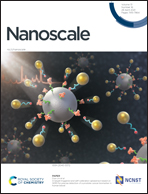Transformation from a non-radical to a radical pathway via the amorphization of a Ni(OH)2 catalyst as a peroxymonosulfate activator for the ultrafast degradation of organic pollutants†
Abstract
The peroxymonosulfate (PMS) activation reaction using transition-metal-based catalysts has been proven to be a promising approach for the degradation of refractory organic contaminants; however, the ambiguous structure–property relationship between the intrinsic free-radical and non-radical mechanistic pathway selectivity and structural characteristics greatly hinders the development of active catalysts. Taking Ni(OH)2 as a model catalyst, this work reveals that the pathway selectivity during PMS activation can be controlled via the construction of crystalline and amorphous structures. Electron paramagnetic resonance and radical quenching experiments verified that amorphous Ni(OH)2 with disordered –OH, synthesized via a formamide-assisted precipitation method, dramatically promotes the generation of ˙OH and SO4˙− (the radical pathway), which highly improved the degradation efficiencies toward organic contaminants. However, crystalline Ni(OH)2 was found to activate PMS through via a non-radical pathway. Density functional theory calculations reveal that amorphous Ni(OH)2 possesses an electron-rich active surface, which favors the breaking of O–O bonds instead of O–H bonds in PMS molecules and triggers radical production. As confirmed via electrochemical measurements, the essence of PMS activation was uncovered; it was found that pathway selectivity was determined based on the electron-donating capabilities, which were highly dependent on the –OH group environments. Impressively, the catalytic mechanism of the same material can be successfully and precisely regulated from a non-radical to a radical pathway for PMS activation via a structural engineering method, which can simultaneously improve the catalytic performance for the effective elimination of emerging contaminants in aquatic environments.



 Please wait while we load your content...
Please wait while we load your content...